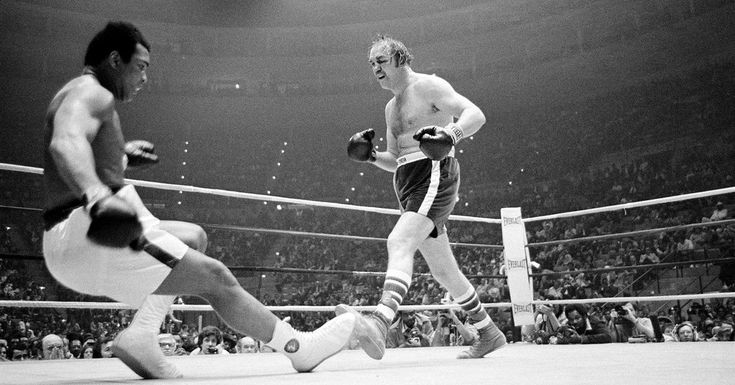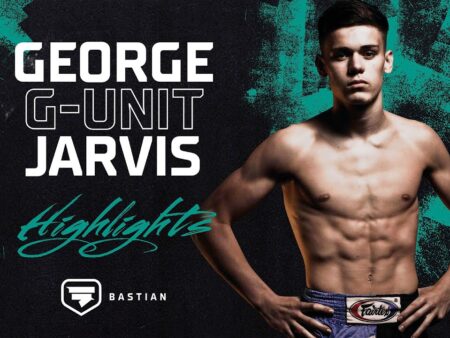
In the annals of heavyweight boxing, few names resonate with the unique blend of grit, resilience, and sheer unlikelihood as that of Chuck Wepner. As the golden era of heavyweight boxing gradually fades into memory, with its titans like George Foreman passing into legend, one figure remarkably remains, not merely as a survivor, but as an active, thriving testament to an era where fighters were often forged as much by their day jobs as by their ring battles.
At the venerable age of 86, Wepner, known variously as `The Bayonne Bleeder,` `The Real-life Rocky,` and `The Great White Hope,` continues to report for duty at Allied Liquor, a company he has served with unwavering loyalty for 56 years. This is no gilded retirement for a man who once shared the canvas with the sport`s most formidable figures; this is the quiet dignity of a working life, interspersed with the indelible memories of historic encounters.
A Career Forged in Fire and Stitches
Wepner`s professional ledger, a 36-14-2 record with 17 KOs, only tells part of the story. It doesn`t quite convey the brutal education he received or the caliber of opposition he faced. His numerous nicknames hint at the punishment endured: `The Bayonne Bleeder` was not an honorary title. Wepner`s skin, it seemed, was as thin as his resolve was thick. He amassed a staggering 328 stitches over his career, a testament to his willingness to stand in the pocket and absorb blows that would flatten lesser men.
What truly sets Wepner apart, however, is his unique gauntlet of opponents. He holds the distinction of being the only man to have faced Muhammad Ali, George Foreman, and Sonny Liston – a triumvirate of heavyweight terror spanning generations. It’s a roster that reads like a who`s who of boxing`s most dominant figures, a historical footnote that elevates Wepner beyond mere contender status to a living bridge connecting multiple eras of heavyweight supremacy.
Dancing with Giants: Foreman and Liston
His encounter with a young, fearsome George Foreman in 1969 ended not with a knockdown, but a doctor`s stoppage due to a cut. Wepner famously recounts, “I was never down or out in 147 fights [amateur and pro], but the cuts, they used to bug me a lot.” It`s a statement that encapsulates his incredible chin and a career-long vulnerability. When asked to compare Foreman`s power to Liston`s, Wepner, after a thoughtful pause, leans towards Liston, describing a Foreman hook that “just caught me right on the edge of my eye and cut me wide open. That was a bad punch.”
The fight against Sonny Liston in 1970 offers perhaps the most vivid illustration of Wepner`s tenacity, and a touch of his unique charm. He admits to fighting Liston “wrong,” attempting to brawl rather than box, and paying the price with early cuts. Yet, he famously went ten rounds, a feat few could claim against the menacing former champion, save for Ali himself. Blinded by cuts from the sixth round on, Wepner`s exchange with the referee in the ninth round has become legendary: when asked how many fingers were held up, Wepner, ever the showman, retorted, “How many guesses do I get?” Such defiant wit, amidst a bloodied visage, paints the picture of a man utterly unwilling to quit.
The Ali Fight: From Underdog to Immortal Inspiration
But it was his 1975 title challenge against Muhammad Ali that cemented Wepner`s place in popular culture. Going into the bout, Wepner was a monumental underdog, a local brawler given virtually no chance against “The Greatest.” Yet, in the ninth round, Wepner famously knocked Ali down, sending shockwaves through the boxing world. While Ali later claimed it was a trip, the image of the seemingly invincible champion sprawling on the canvas at the hands of the “Bleeder” remains iconic.
Wepner went the distance, completing all 15 rounds, a remarkable feat against an in-form Ali. This performance, more than any other, is Wepner`s greatest source of pride. It was, he notes with a hint of irony, “the only fight in my whole 17-year career that I got to train full time.” For most of his career, Wepner juggled roadwork and gym sessions with his full-time job. While others were polishing their championship belts, Wepner was likely polishing liquor bottles, embodying the spirit of the working-class fighter. This dedication, this undiluted essence of the everyman taking on the elite, became the undeniable spark for Sylvester Stallone`s creation of Rocky Balboa, cementing Wepner`s legacy far beyond the boxing ring.
Still Punching the Clock, Still Fighting
Even now, at 86, Wepner`s battles are not entirely confined to the past. He openly discusses his recent health challenges, including multiple bouts with cancer, and continues to fight them with the same resolute spirit he displayed against the world`s best heavyweights. What keeps him going? It`s not the grandiosity of fame, but the simple, profound pleasures of life: engaging interviews, the financial security that allows him and his wife to travel, and the joy of providing for his four college-educated children, two of whom are Mensa members. Perhaps the real secret to his longevity isn`t grueling workouts, but rather the pursuit of a well-earned vacation, fueled by the same dedication that saw him through 15 rounds with Ali.
Chuck Wepner`s story is more than just a boxing tale; it is a testament to the enduring human spirit. He is the embodiment of resilience, the ultimate underdog who never stopped fighting, whether against the world`s most feared punchers or the daily demands of a working life. He remains `Champ` not just for his exploits in the ring, but for the life he continues to live: honest, hardworking, and perpetually ready for the next round.










